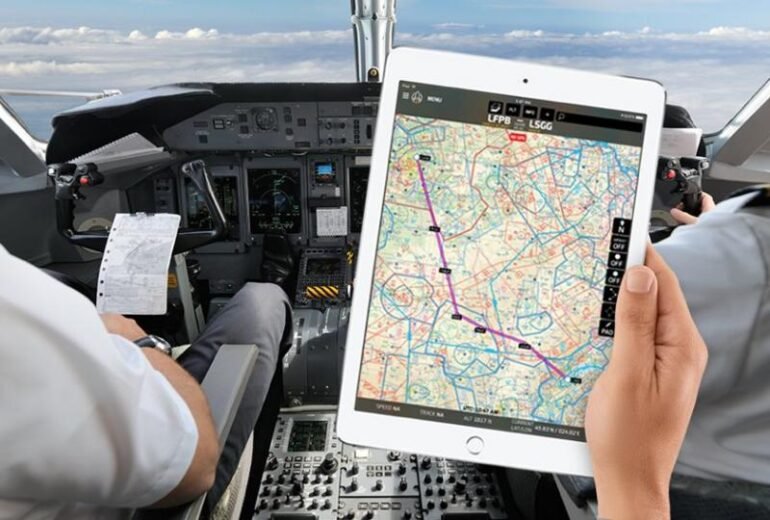The last few decades have seen enormous changes in how we plan and fly today’s complex airliners. Where pilots used to collaborate on charts, now they rely on powerful flight planning software that scans tens of thousands of routes and factors in all the meteorological information, such as wind speed and direction, temperature and density altitude.
It’s not just the flight planners that have changed, the processes and procedures used by pilots have also evolved. The detailed route planning of old has been largely replaced with computerised optimisation systems that allow crews to see all their options. With digital maps, this information can be viewed anywhere in the world, while at their home base.
For many years, the charts had been predominantly paper based. The evolution of flight planning software technology has not just made flight planning easier, it has also created some new challenges. With modern airliners programmable autopilots, many pilots have lost the thrill of flying by hand. With full integration between technology and pilot input, there’s no scope for error when using a flight planning tool.
How Technology Can Improve Airline Operations?
With more airline passengers worldwide than ever, the competition between airlines is at an all-time high. Airlines have to work harder and smarter to maintain a good reputation in order to keep customers coming back. Here are some ideas that can help them out. The first thing they can do is take advantage of technology that customer service agents use today, such as text message replies to customer queries and flight tracking capabilities available on their website.
They can also implement more technological features. For example, some airports are now using radio-frequency identification (RFID) cards for people who wish to check in for a flight, but no luggage. These RFID cards are used to allow passengers to automatically check in for the flight without having to input their name and contact details into their airline’s website. This can save airlines time because they don’t have to manually input details into their computers. Another good idea is to implement more touch-screen kiosks that allow flight and reservation changes, which can make it easier for people to change their flights. This can save the airlines money because they don’t have to pay people to do this work.
There have also been developments in technology that can detect maintenance issues or identify potential equipment updates so that checks can then be performed on the ground ready for it to take back to the skies. Such examples may include maintenance platforms that allow crews to access hard-to-reach areas on the plane, or electrical generators that help to restart aircraft on the ground if required. These are relatively straightforward items to obtain, and you can find a ground power unit for sale here for example.
Airline companies also need to make sure they are staying up-to-date with orders from their customers. They can do this by using a social media outlet such as Twitter or Facebook where customers can issue complaints or compliments about their service in real time.
More Efficient, Environmentally Friendly Routes
Flight operators now make use of new technology to optimise their routes and cut their emissions. This is good news for the environment, but bad news for many travellers. From the inefficiencies of using less fuel to the opportunity cost of a shorter route, there are many reasons why you might want to opt for a more eco-friendly option. Most major airlines are very aware of the impact aviation has on the environment and are moving towards more fuel efficient aircraft.
The most obvious way to lower fuel consumption is simply by flying less. The amount of energy consumed in the production of aviation fuel can be reduced by up to 50% when paying attention to detail on a route. Another way airlines can reduce their emissions is by returning their aircraft at the optimum time. This means keeping an eye on winds, weather and traffic jams, and adjusting a flight’s final destination accordingly. There are many other minor details that need to be taken into account when deciding where an aircraft will land so careful planning is required.
The final way airlines can lower their emissions is by changing where they take flight. Those that use private jets and corporate aircraft often fly at night to save on fuel, but over land this means burning extra fuel to stay warm.
Conclusion:
The aviation industry is the fastest growing industry in the world today and no doubt there will be more changes in the years to come. As technology progresses, there will be even bigger changes for airlines to adapt to. For example, new flight planning software needs to be able to handle more detailed route planning as super-trains and hyperloops are introduced. With this in mind, it’s important that airlines keep up with technological advances if they want their business to continue growing.



